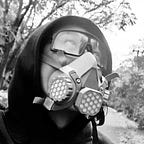3 ways Non-Profits can do to Cushion the Intersection of Poverty, Ecological Degradation and COVID-19
Climate Change, Ecology, Poverty and COVID-19
While the news about COVID-19 is dominated by the race for vaccines and the economic recession of countries, my thoughts went back to the poor communities in the Sundarbans in the southwest of Bangladesh. I was for several years been involved in the work of local non-profit organizations in this region in building disaster resilience against storm surges, cyclones, and sea-level rise. What these coastal communities represent in our current discourse on COVID-19 — is the issue that this pandemic is not so much of a health problem alone but more of a problem of poverty and inequality.
The historical poverty, inequality, and vulnerability make these communities hotspots for zoonotic pandemics like COVID-19. These communities for several years have low access to health and education services as well as opportunities for active participation in the mainstream economy. For several years they are dependent on the resources of the Sundarbans, the world’s largest and threatened mangrove forests. Poverty, exclusion, and ecological degradation increases the likelihood of human-wildlife interactions leading to outbreaks of zoonotic diseases like COVID-19.
These communities in my opinion are the best picture of the huge crises of development when poverty, climate change, and ecological degradation collide.
Urgency and scale of action needed
The last pandemic of this scale happened a hundred years ago and for this generation this is unprecedented and the development sector is expected to do new things to address the problem. For me, the biggest question that I think we should all ask in the development sector is not so much about what new things we need to do because of COVID-19 instead we should be asking about out-scaling effective programs on poverty reduction, health, education, and local economic development. There is a need to make changes here and there in program design but the bottom line is — the reason we are in this crisis of this scale because we have not acted with urgency and with scale to address climate change, ecological degradation, and poverty. We need to out-scale programs on poverty reduction, health, education, access to clean water, risk management, and preparedness.
We need to heightened our calls for increased investments in development work. Development funding has changed in the past 10 years — from aid investments by the global north to the emergence of new modalities of bringing development aid such as impact investments by the private sector and individual and corporate philanthropy. Non-profits of the future need to shed is traditional dependence on grants to a more entrepreneurial approach to development aid.
Not only that we need to increase funding to achieve a broader scale of impacts, non-profits also need to understand the various pathways to achieve scale and to put investments in pathways that will leverage a much bigger scale and impact. We need to break away from the thinking that non-profits are the only players that bring about community development. We need to think of governments, businesses, and academia as potential pathways to achieve scale in our development programs.
Finally, non-profits have to leverage appropriate technology. There has to be a drive to innovate not just about making new technologies and tools (gadgets, crops, and framework) but also to find new ways of achieving development outcomes. We need to re-think our business models based on shared value with other sectors of society and working in ways that maximize new tools such as social media and big data.
Development programs in a COVID-19 Context
In a post-COVID-19 development program for rural communities including those that I have worked within the Sundarbans of Bangladesh, it will have to prioritize certain areas of action. This is to ensure effective recovery of the affected poor communities as well as build capacities for resilience.
First is the importance of addressing food security in the immediate term and long term. This is done by taking a food systems approach that looks at not just food relief but also includes interventions in local food production, processing, distribution, and consumption. The goal is to make sure the poor’s food security is not dependent on relief but in the healthy functioning of a multi-sectoral food system.
Second is investing in livelihoods recovery that combines agriculture and fishing with non-agriculture income-generating activities. This is more relevant now with increasing unemployment rates brought by the economic recession. For instance, instead of just distributing climate-resilient seeds, tools, and materials for farming, we can also look at promoting technical-vocational skills development, providing microfinance and insurance for risk management. Business development services that support existing and as well as incubate new small and medium enterprises will be essential if we are to generate local employment opportunities.
Finally, non-profits can learn from several years of experience in community-led disaster risk reduction and preparedness and use this as an approach to building resilient community health systems. This includes using participatory risk assessments to identify vulnerable populations to COVID-19 and other zoonotic diseases, recruiting and training village-level health workers in early detection, management, and isolation, preparing a community-level epidemic response plan including mechanisms for contact tracing, pre-positioning of materials such as PPEs and preparation of quarantine facilities. By investing in these programs now, we are also preparing communities for better utilization and mobilization when the COVID-19 vaccine will become available.
Sometime in May this year, while I was safely locked down in my home, I received news from one of the organizations working in the Sundarbans of how they were able to assist and provided shelter for 600 people in the village affected by Cyclone Amphan that hit them. My worst fears are happening — when climate change and ecological degradation collide with COVID-19 — it’s the poor that suffers the most. We need to act and act fast.
